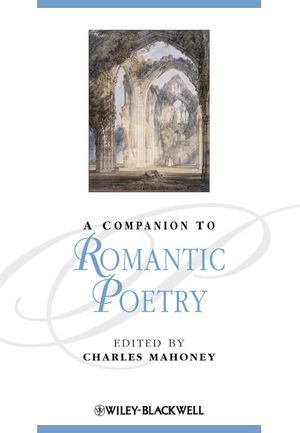

Most ebook files are in PDF format, so you can easily read them using various software such as Foxit Reader or directly on the Google Chrome browser.
Some ebook files are released by publishers in other formats such as .awz, .mobi, .epub, .fb2, etc. You may need to install specific software to read these formats on mobile/PC, such as Calibre.
Please read the tutorial at this link: https://ebookbell.com/faq
We offer FREE conversion to the popular formats you request; however, this may take some time. Therefore, right after payment, please email us, and we will try to provide the service as quickly as possible.
For some exceptional file formats or broken links (if any), please refrain from opening any disputes. Instead, email us first, and we will try to assist within a maximum of 6 hours.
EbookBell Team

4.3
58 reviewsContent:
Chapter 1 Mournful Ditties and Merry Measures: Feeling and Form in the Romantic Short Lyric and Song (pages 7–24): Michael O'neill
Chapter 2 Archaist?Innovators: The Couplet from Churchill to Browning (pages 25–43): Simon Jarvis
Chapter 3 The Temptations of Tercets (pages 44–61): Charles Mahoney
Chapter 4 To Scorn or To “Scorn not the Sonnet” (pages 62–77): Daniel Robinson
Chapter 5 Ballad Collection and Lyric Collectives (pages 78–94): Steve Newman
Chapter 6 Satire, Subjectivity, and Acknowledgment (pages 95–106): William Flesch
Chapter 7 “Stirring shades”: The Romantic Ode and Its Afterlives (pages 107–122): Esther Schor
Chapter 8 Pastures New and Old: The Romantic Afterlife of Pastoral Elegy (pages 123–139): Christopher R. Miller
Chapter 9 The Romantic Georgic and the Work of Writing (pages 140–158): Tim Burke
Chapter 10 Shepherding Culture and the Romantic Pastoral (pages 159–175): John Bugg
Chapter 11 Ear and Eye: Counteracting Senses in Loco?descriptive Poetry (pages 176–194): Adam Potkay
Chapter 12 “Other voices speak”: The Poetic Conversations of Byron and Shelley (pages 195–216): Simon Bainbridge
Chapter 13 The Thrush in the Theater: Keats and Hazlitt at the Surrey Institution (pages 217–233): Sarah M. Zimmerman
Chapter 14 Laboring?Class Poetry in the Romantic Era (pages 234–250): Michael Scrivener
Chapter 15 Celtic Romantic Poetry: Scotland, Ireland, Wales (pages 251–267): Jane Moore
Chapter 16 Anglo?Jewish Romantic Poetry (pages 268–284): Karen Weisman
Chapter 17 Leigh Hunt's Cockney Canon: Sociability and Subversion from Homer to Hyperion (pages 285–301): Michael Tomko
Chapter 18 Poetry, Conversation, Community: Annus Mirabilis, 1797–1798 (pages 302–317): Angela Esterhammer
Chapter 19 Spontaneity, Immediacy, and Improvisation in Romantic Poetry (pages 319–336): Angela Esterhammer
Chapter 20 Celebrity, Gender, and the Death of the Poet: The Mystery of Letitia Elizabeth Landon (pages 337–353): Ghislaine McDayter
Chapter 21 Poetry and Illustration: “Amicable strife” (pages 354–373): Sophie Thomas
Chapter 22 Romanticism, Sport, and Late Georgian Poetry (pages 374–392): John Strachan
Chapter 23 “The Science of Feelings”: Wordsworth's Experimental Poetry (pages 393–411): Ross Hamilton
Chapter 24 Romanticism, Gnosticism, and Neoplatonism (pages 412–424): Laura Quinney
Chapter 25 Milton and the Romantics (pages 425–441): Gordon Teskey
Chapter 26 “The Feel of not to Feel it,” or the Pleasures of Enduring Form (pages 443–466): Anne?Lise Francois
Chapter 27 Romantic Poetry and Literary Theory: The Case of “A Slumber did my Spirit Seal” (pages 467–482): Marc Redfield
Chapter 28 “Strange Utterance”: The (Un)Natural Language of the Sublime in Wordsworth's Prelude (pages 483–502): Timothy Bahti
Chapter 29 The Matter of Genre in the Romantic Sublime (pages 503–520): Ian Balfour
Chapter 30 Sexual Politics and the Performance of Gender in Romantic Poetry (pages 521–537): James Najarian
Chapter 31 Blake's Jerusalem: Friendship with Albion (pages 538–553): Karen Swann
Chapter 32 The World without us: Romanticism, Environmentalism, and Imagining Nature (pages 554–571): Bridget Keegan
Chapter 33 Ethical Supernaturalism: The Romanticism of Wordsworth, Heaney, and Lacan (pages 572–588): Guinn Batten
Chapter 34 The Persistence of Romanticism (pages 589–605): Willard Spiegelman